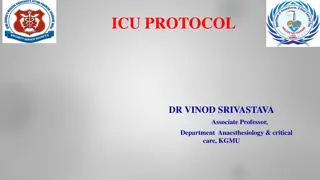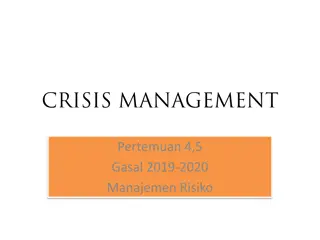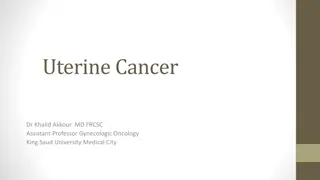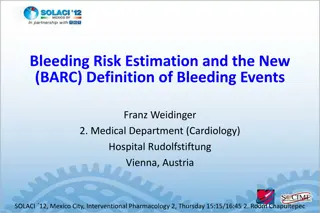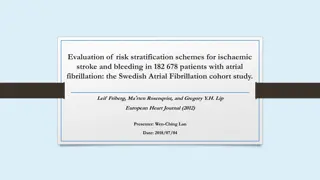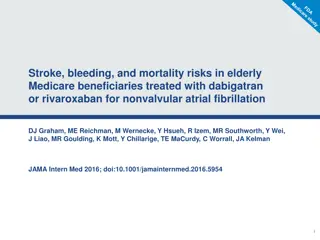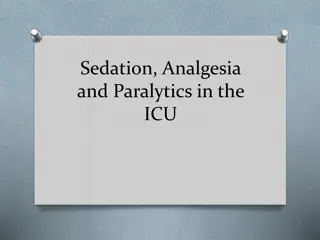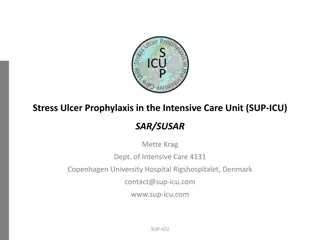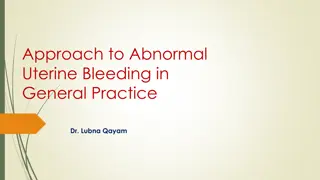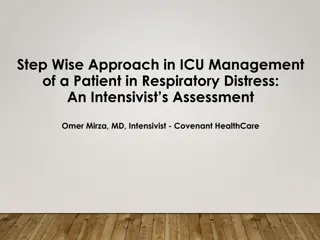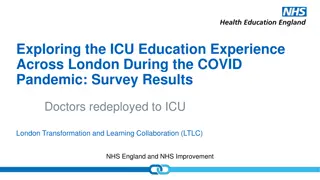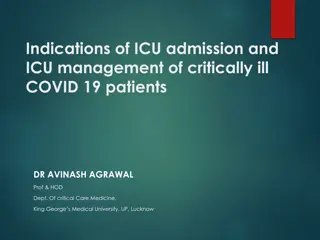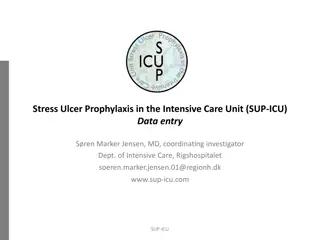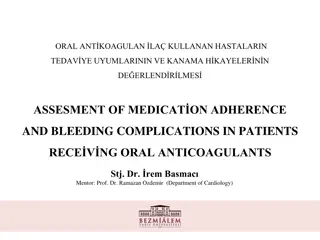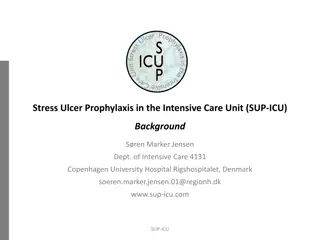ICU Crisis Management: Severe GI Bleeding in a Complex Patient
Overnight case of a 61-year-old female with major health issues experiencing hypotension, severe GI bleeding, and difficulties in treatment due to prior comorbidities. The patient required intensive care, massive transfusion, and specialized vascular access to address the ongoing bleeding. Despite interventions, the source of bleeding remained unidentified after endoscopic procedures.
Download Presentation

Please find below an Image/Link to download the presentation.
The content on the website is provided AS IS for your information and personal use only. It may not be sold, licensed, or shared on other websites without obtaining consent from the author.If you encounter any issues during the download, it is possible that the publisher has removed the file from their server.
You are allowed to download the files provided on this website for personal or commercial use, subject to the condition that they are used lawfully. All files are the property of their respective owners.
The content on the website is provided AS IS for your information and personal use only. It may not be sold, licensed, or shared on other websites without obtaining consent from the author.
E N D
Presentation Transcript
Morning report 11/16 Max Fuller
Case presentation On call overnight in the ICU Around midnight, RRT called on R5 I received a page shortly afterwards from the Medicine resident Pt with hypotension, bright red blood per rectum, hemoglobin 5.7, needs to come to the ICU Waited in ICU for patient to come up and did some chart checking
Case presentation 61 year old female who was admitted about 3 weeks prior Initially admitted for failure to thrive type picture PMH significant for major depressive disorder, CVA with R sided hemiplegia, HTN Developed catatonia during hospitalization Psych consulted and has received ECT during admission GI had been consulted earlier that day due to bright red blood per rectum and had been planning for EGD/colonoscopy the next day Started on BID PPI after CT done showing gastric wall thickening and pan-colitis
Case presentation BP 76/48, HR 103, T 35.5 C, RR 16, 100% on RA She is minimally responsive, pale Extremities warm, peripheral pulses intact Does not move R side but this is chronic Hemoglobin during RRT is 5.7, down from 7.7 prior morning Had received a transfusion earlier that day for hemoglobin of 6.4 She continues to have bright red blood from her rectum What do we do next?
Case presentation Was noted a few days prior that it was very difficult to find IV access Two days prior she had a single lumen PICC line placed Catheter was 4 Fr which is equivalent to 18 G IV Also had a 20 G IV in her L arm At this point, the massive transfusion protocol has been activated I discussed with her nurse about getting better IV access Able to place a 22 G IV in her R foot but otherwise difficult to find access Ultimately placed a 8.5 Fr sheath introducer catheter (~12 G) in her R IJ and arterial line in R femoral artery
Case presentation Continued to have ongoing bleeding Received 3 coolers (2 units PRBCs/cooler) overnight Hemoglobin still in 6-7 range Continued to have bright red blood per rectum Did require some norepinephrine to maintain pressures Early AM, large amount of blood per rectum Received 4 more coolers EGD and colonoscopy done Colonoscopy with bright red blood unable to visualize source of bleeding
Case presentation Given cooler number 8 IR consulted CT angiography done localizing bleeding to distal branch of inferior mesenteric artery Underwent successful embolization of superior rectal artery Received 17 units of blood in about a 12 hour span Repeat flexible sigmoidoscopy showed rectal ulcer Biopsy taken and no evidence of malignancy or dysplasia Spent about one week in the ICU Ongoing treatment of her psychiatric illness on the floor and did well
IV access Most critical component to managing massive GI bleed 2 large bore (18 G or greater) For patients undergoing massive transfusion protocol, consider large bore central access plus arterial line Arterial line especially important for patients who need pressors Need to avoid over shoot hypertension as this may encourage re bleeding
Sheath introducer 8.5 F, single lumen Used for IV access, swan ganz catheter insertion, transvenous pacing
MAC Two Lumen CVC Two ports, 9 Fr (~11 G) and 12 G Also can be used as introducer Probably the best option for patient who needs massive resuscitation
Triple lumen CVC Three lumens Two 18 G, one 16 G
Infusion rates with pressure
Massive GI bleed: initial management ABCs IV access, type and screen Transfuse to Hgb >7 IV PPI if possibility of upper GI bleed Octreotide if variceal hemorrhage possible Antibiotics if cirrhotic Reverse coagulopathy
Management Upper GI bleed After stabilization upper endoscopy If EGD identifies source of bleeding but unable to achieve hemostasis, IR is usually next step Can consider erythromycin to promote gastric emptying Lower GI bleed 85% of time hematochezia is due to lower GI bleed but brisk upper bleed can present like this Colonoscopy is rarely useful for severe lower GI bleeds CT angiography can help identify bleeding vessel and allow for IR intervention


